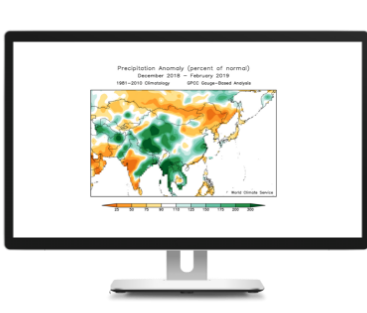Try the World Climate Service Forecast System
Rely on the power and accuracy of the World Climate Service to inform your commodity trading, climate insight, and risk management decisions.
Save time by having all necessary long-range forecast information available at your fingertips through the WCS portal.

Seasonal Climate Forecasts - Forecasts of climate conditions from 1 to 6 months in advance
Subseasonal Climate Forecasts - Weather and climate prediction from 2 to 6 weeks in advance
Competitive Advantages
Comprehensive Approach
The World Climate Service provides a unique combination of forecast and analysis tools to uncover predictability and maximize success.
Probability & Confidence
The World Climate Service enables high-value decision making with a rigorous approach to probabilistic forecasting. Identifying high probability “forecasts of opportunity” allows customers to make decisions confidently.
Data-Driven Services
The World Climate Service empowers user decision systems by providing automated data feeds. Quantitative forecasts of industry-specific variables allow clients to make weather-sensitive decisions with confidence.
Yes, I want a FREE 30-DAY TRIAL of World Climate Service
Prescient Weather Ltd 200 Innovation Blvd Ste 229 State College PA 16803
QUICK LINKS
